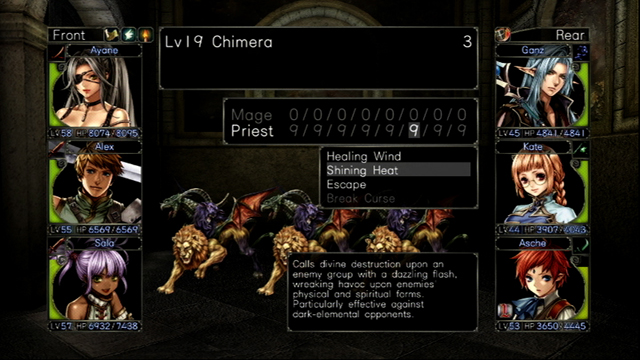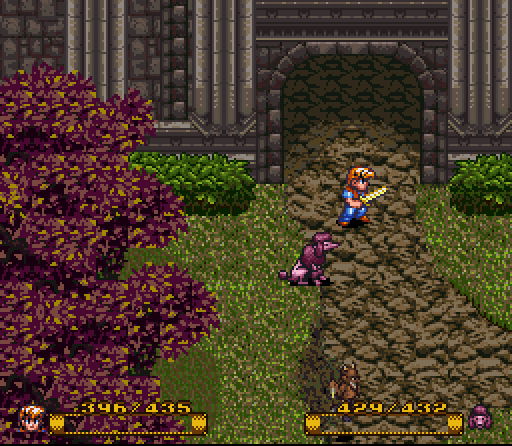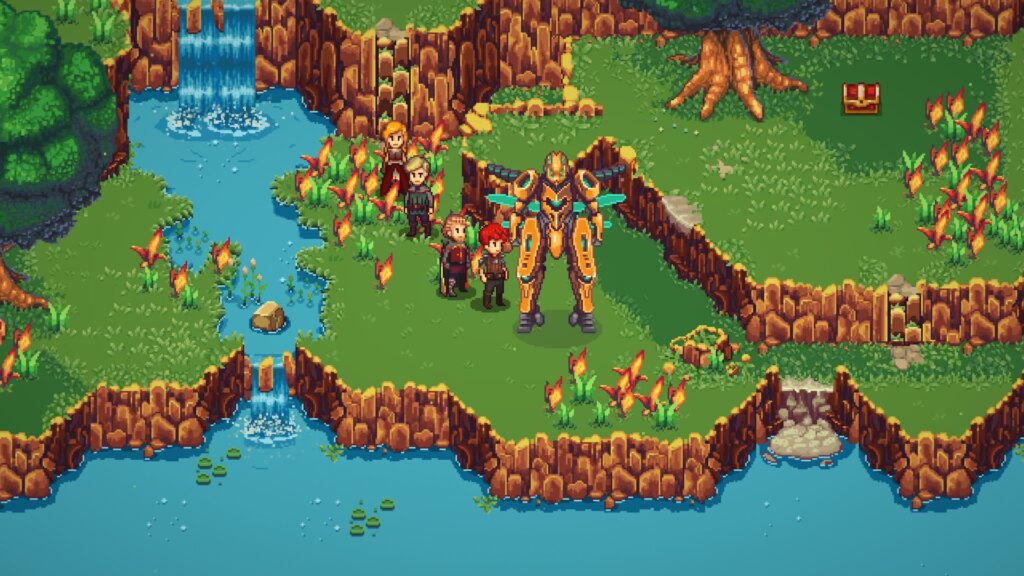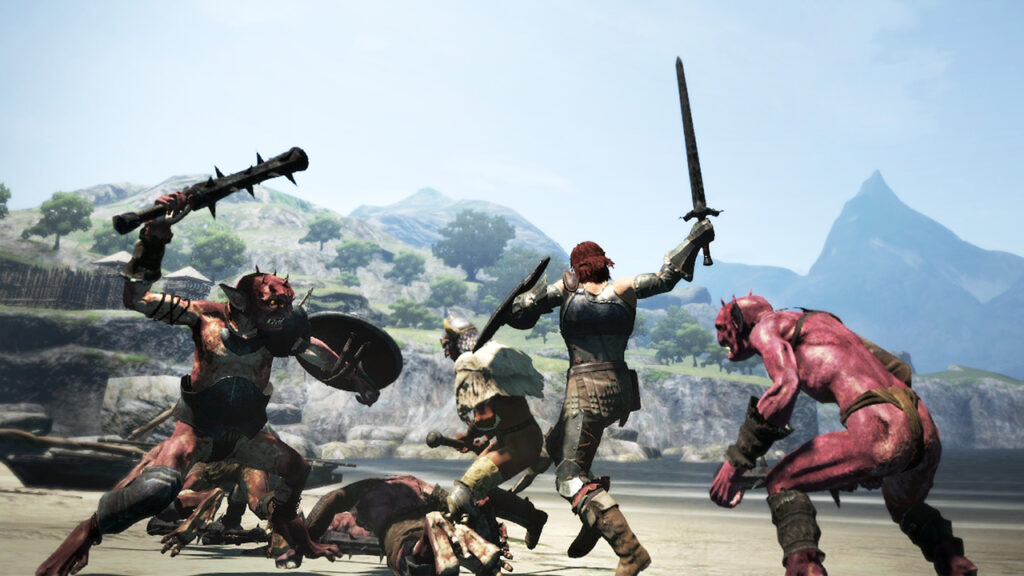Where do we start when it comes to Western-style JRPGs? Perhaps we should get clear about what we are looking for. After all, the wording is ambiguous.
Does a game with JRPG mechanics that was made by a Western company meet the definition? If you believe that a JRPG must, categorically, come from Japan (as the name “Japanese Role Playing Game” indicates), then perhaps not. In that case, a “western-style JRPG” could simply mean one with a Western attitude to gameplay systems, though it was made in the East.
Alternatively, it could mean a Japanese game without traditional Japanese aesthetics (eg. not inspired by manga). Dark Souls (2011) might fit into this category… but that brings up the debate of whether Dark Souls is an RPG in the first place.
We haven’t even started, but we can already see that this is a sticky subject.
Perhaps we should start with the history. Cultural cross-contamination has been at play in the JRPG genre from the very start. Wizardry (1981), the dungeon crawler invented by students of Cornell University in New York, became a tremendous influence on Yuji Horii, the creative force behind Dragon Quest (1986).
And he isn’t the only one. Wizardry reached such heights of popularity in Japan in the 1980s that it might not be an exaggeration to say that all of the early pioneers of RPGs in Japan could trace their influences, game-to-game, to Wizardry in only a step or two.
Today, the Wizardry series is owned by a Japanese corporation, who continue to make entries in the series, though with a slightly more manga-inspired character design. One of the first games to come out of the Japanese “Wizardry Renaissance” was Wizardry: Labyrinth of Lost Souls (2009).

A Japanese company gaining control of an American RPG franchise is a little unusual. Just as rare is an American company getting the opportunity to work on a Japanese RPG franchise. But did you know it almost happened with the biggest JRPG franchise of all, Final Fantasy? The cancelled game Fortress, which started production in 2008, was due to be a spin-off of Final Fantasy XII developed by the Swedish studio behind Ghost Recon: Advanced Warfighter, Grin. Sadly (I think), it never saw the light of day.
However, it is not so rare for western and Japanese designers to collaborate, as was the case with Secret of Evermore (1995). It is almost an entry into the Mana series, taking its inspiration from Secret of Mana and developed by Square, but it was developed entirely by Square’s North American division. In fact, it was never even released in Japan. This makes it something of a poster child of the western-style JRPG.
Nintendo Life: Was there a lot of emphasis placed on making sure Secret of Evermore had a very “American” feel to it?
Brian Fehdrau: Yes, very much so. That was practically our Prime Directive, so to speak, coming straight down from Starfleet Command over at Square Co. Ltd. in Japan, our mother company. We were, simply put, to make an American-flavored Secret-of-Mana-like game.
Interview with Brain Fehdrau, lead programmer on Secret of Evermore

Despite leaning on American cultural references, Evermore was set in a fantasy universe. To contrast, let’s next look at JRPGs with western-inspired settings. Sometimes described as Japanese Americana, and released in the same year as Evermore, Earthbound (1995) is the most well-known example. You might not find the towns of Onett and Fourson on a USA map, but they do a charming imitation of a mid-western suburb and of the Empire State, respectively. Yet Earthbound was created entirely in Japan, in the offices of Nintendo itself.
In the same category (well, for the purposes of this section of the article only), Shadow Hearts (2001), developed by Tokyo-based Sacnoth Inc. by former employees of Square, foregos most of the typical Japanese fantasy tropes. Instead, it gives us a tale of an alternate history largely set in foggy 1913 Britain.
Shadow Heart’s aesthetic, though darker than the average Final Fantasy, is still drawn from anime. For a game with character designs based on an American style of illustration, let’s jump across the ocean and look at our first “American-developed JRPG”. Battle Chasers: Nightwar (2017), might be distinct from most JRPG in terms of artstyle and country of origin, but it’s hard to deny that this turn-based battler captures the spirit of the eastern genre admirably.
Where Dragon Quest has Akira Toriyama, Battle Chasers: Nightwar has Joe Madureira, the well known American comic-book artist setting the artistic direction. It is refreshing to see an JRPG with an uncompromising, almost stereotypical American look, straight from a comic book.
The next example is again western developed, but stars characters from Japan. Though I said that it is rare for an American company to get their hands on a Japanese RPG franchise, this Japanese franchise is not very associated with RPGs at all! Yet this just makes the Bioware-developed, Sonic the Hedgehog-themed JRPG, Sonic Chronicles: The Dark Brotherhood (2008), even more surprising!
Sonic Chronicles was released, it was a novelty, but it is not the only JRPGs crafted by reasonably sized Western studio. It is an occurance that repeats after long gaps. Several years before Sonic Chronicles, it was Anachronox (2001). Several years later, it was the Ubisoft-developer Child of Light (2014). Perhaps we are due another.
The trend can in some ways be attributed to nostalgic JRPG players of the 90s becoming game makers in their adulthood. With this in mind, it is far from surprising that the world of indie development has gifted us with its own canon of Japanese-inspired games, which typically recreate the pixel art style of the SNES JRPG golden age.
Let’s start with the big one. Though the influences of Undertale (2015) are numerous and eclectic (who would have thought of combing JRPGs with shmups), the deep homage it pays to classic Nintendo JRPGs cannot be denied. It’s popularity even seems to have outshone it’s main inspiration, the aforementioned Earthbound.
Spurred on by the success of Undertale and others, this trend among indie developers continues to this day. I don’t know if we’re at the pinnacle yet, but if you need evidence that we’ve not yet hit a decline, the recent success of Chained Echoes (2022), made in Germany but borrowing enthusiastically from the likes of Chrono Trigger and Xenogears, should convince you.

Along a different line of thinking, we can look at Japanese-developed games that use mechanics more commonly found in western RPGs (they used to be called WRPGs, but that term, unlike JRPG, seems to have fallen out of fashion). Some examples are Star Ocean, that includes many character traits and stats that are only useful outside of battle, including athletics, cooking and divination.
The height of the “Japanese developer, western-RPG inspired” category we can look at Dragon’s Dogma, which goes against the grain by offering players the chance to create their own characters and choose the members of their party, and offering more freedom than the story-driven, semi-linear approach of the Japanese genre classics.
In this way, Dragon’s Dogma is less similar to a typical Final Fantasy game, and more familiar to somebody used to playing, say… Wizardry? Which brings us full circle.
We have seen that a “Western-style JRPG” could mean many different things. Perhaps we have also learned that the definition of “JRPG” itself has blurred lines. If it looks, plays and smells like a JRPG, can we really exclude it from our consideration just because it was developed by Bioware?

Let’s sum things up with a few examples for each category:
Games made in the East, with a Western setting/aesthetic
- Earthbound
- Shadow Hearts
- Dark Souls
Games made in the West, with an Eastern setting/aesthetic
- Jade Empire
- Indivisible
Games made in the East with WRPG mechanics
- Wizardry: Labyrinth of Souls
- The Dark Spire
- Dragon’s Dogma
Games make in the West with JRPG mechanics
- Anachronox
- Child of Light
- Cthulhu Saves the World
- Sonic Chronicles
- Nightchasers
- Undertale
- South Park: The Stick of Truth
This topic is an interesting one to me, and I well know that the conversation is ongoing and sometimes quite heated. If you have views on what counts as a JRPG, and what Western-style means anyway, be sure to jump into the comments to let us know.
Sources:
[1] Interview with Brian Fehdrau regarding Secret of Evermore (Nintendo Life)